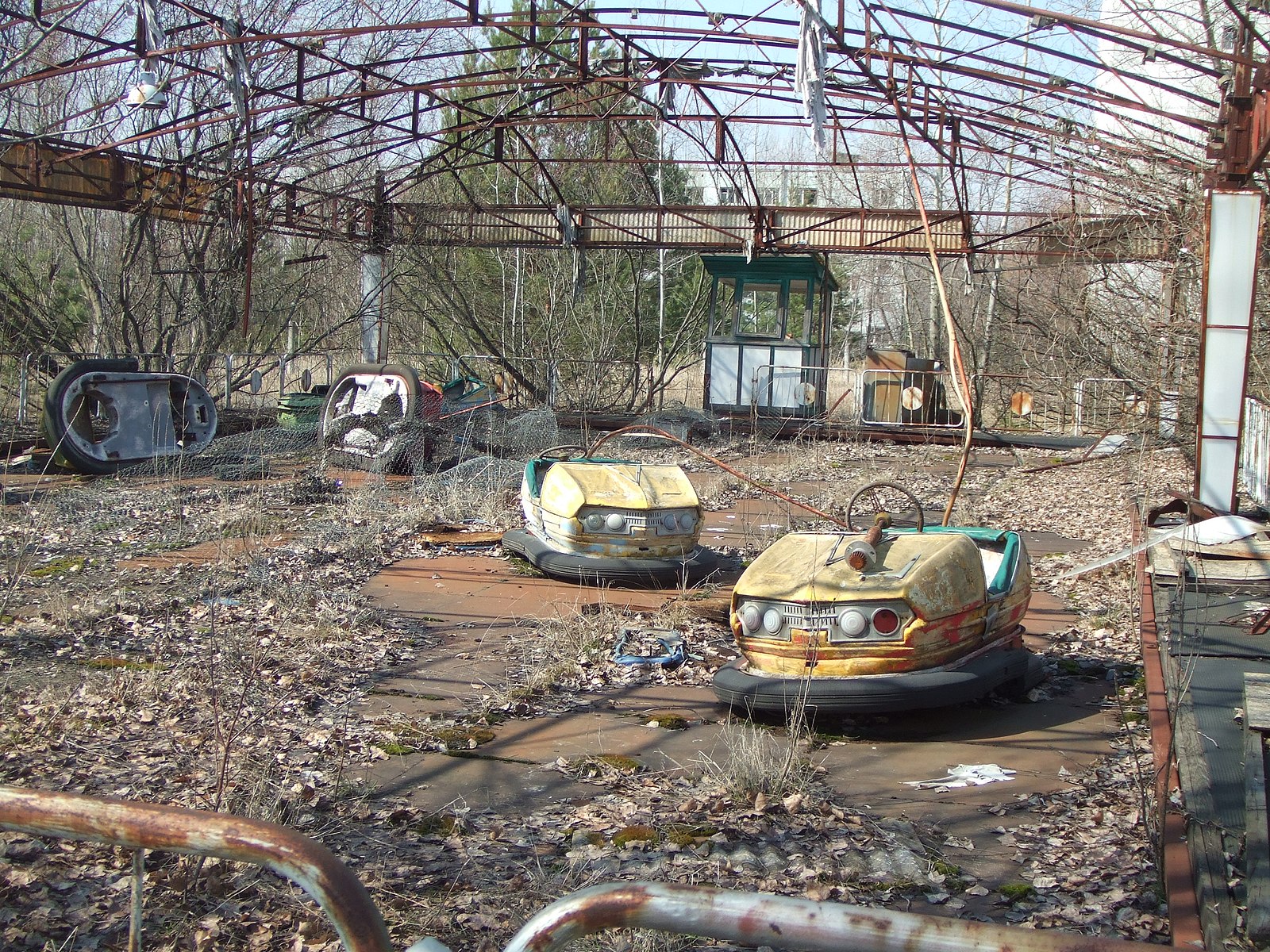Russia is taking over Chernobyl. For ROSATOM, Russia’s national atomic energy company, this is a way of preventing the European Union and the United States from taking control of the nuclear industry in Ukraine (see box below). The European Bank for Reconstruction and Development (EBRD) has spent over 700 million euros to build a protective sarcophagus over the Chernobyl No. 4 reactor, which caused the devastating events of 26 April 1986. According to an EBRD press release, this project is meant to act as a “giant cage to contain the monster”, and also as a long-term infrastructure investment to improve nuclear waste management. The sarcophagus was completed in October 2019.
In 2018, the French nuclear company Orano (formerly Areva) signed a feasibility contract for the reprocessing of spent fuel from Ukrainian reactors. All of them are from Russian technologies. Orano’s management welcomed the business deal as it was highly profitable. “This contract marks an important step for Orano and it is truly a success,” he said and further noted that “It opens the possibility to establish a French recycling system for Ukrainian spent fuel. It is also serving to recognize the merit, the capabilities and skills of the Orano La Hague site”. While the site at La Hague is overflowing, Orano continues to look for foreign investors and business opportunities abroad, even at unsteady zones and with the backing of the French government.
 Prypiat, 3 km from Chernobyl © Justin Stahlman
Prypiat, 3 km from Chernobyl © Justin Stahlman
For more information on the Ukrainian nuclear industry, please refer to the press release “Towards a new Chernobyl?” published by Robin des Bois on April 25, 2014, 28 years after the disaster.
Towards a new Chernobyl?
April 25, 2014
Twenty-eight years following the Chernobyl nuclear disaster, Ukraine is confronted with political turmoil. In this context, management issues concerning the Ukrainian nuclear industry are dangerously put aside. There are 15 nuclear reactors in Ukraine, all fueled by Russia. They were designed in EX-USSR in the 1960s and 1970s and do not meet safety regulations in place today in Ukraine. However, in 2012 the Ukrainian government decided to implement life extensions of 20 years for 11 of its oldest reactors which were to be decommissioned from 2015. Under the current financial and political difficulties, it is doubtful that necessary funds will be available. Important investments are needed to guarantee the adequate radiation protection of workers responsible for upgrading the sites as well as the safety of the reactors beyond the initial life-span. The reactors life extensions are financed by the international community, notably European Bank for Reconstruction and Development (EBRD). The nuclear life extensions have not been subject to a public Environmental Impact Assessment and are not in compliance with the ESPOO Convention which addresses transboundary environmental and health impacts issued by industrial projects.
There are 4 Nuclear Power Plants (NPP’s) in Ukraine: Rovno has 4 reactors and is situated in the north-west; Khmelnitski has currently 2 reactors in operation, it is situated 160 km south of Rovno; with 3 reactors, South-Ukraine is situated 80 km east of Odessa; and finally the largest NPP in Europe, Zaporizhzhia operates 6 reactors, the first of which was connected to the electricity grid in 1985. The history of this site is marked by a lack of qualified workers, by a lack of finance for maintenance and by delays in the payment of wages. Zaporizhzhia is particularly worrying. The NPP is situated in eastern Ukraine and management of the site must be carried out with constant cooperation between The Ministry of Environmental Protection and Nuclear Safety with the Nuclear Regulatory Administration based in Kiev and with the directors and workers onsite.
Moreover, storage and reprocessing of nuclear waste from Ukraine’s NPPs depends upon Russia’s good will and competence. At the moment, the capacity of spent fuel storage pools at NPP’s in Ukraine is being extended.
At the Ukrainian Sevastopol University in Crimea there is a small research reactor. It was recently seized by Russian troops. Another research reactor situated in the north-eastern Kharkiv oblast is scheduled to start up this year with the technical and financial assistance of the United States.
The last reactor at Chernobyl was closed down in 2000 following international pressure. In the summer of 2010 Robin des Bois alerted the public and scientists on the risk of forest fires around Chernobyl. The forests in the Chernobyl area are considered as reservoirs of radioactivity containing cesium, strontium, plutonium and other fission products. The United Nations recently confirmed the potential risk of another Chernobyl disaster which could be provoked by a major forest fire. The radioactive Chernobyl 1986 atmospheric fallout could be remobilized and the contamination spread over larger areas depending on the weather conditions. The contaminated forests are not maintained. Dead trees, fallen branches, pine cones, leaves and other organic litter have accumulated creating a thick combustible layer. These forests are nuclear time bombs which could be triggered by a wildfire. There are no early warning-systems except for the vigilant eyes of the brave fire fighters looking out from the peaks of fire towers. Access on the ground to fire lanes is blocked by a dense cover of vegetation. In the air there are few helicopters and they are not equipped with water tanks. Fire fighters have limited protective gear, inadequate equipment and do not have a coordinated emergency response plan.
In these conditions, Robin des Bois urges Ukraine, Russia, all neighbouring countries and the IAEA (International Atomic Energy Association) to cooperate in view of a safe management of the Ukrainian NPP’s and to prevent forest fires in the Chernobyl area.
 Imprimer cet article
Imprimer cet article








